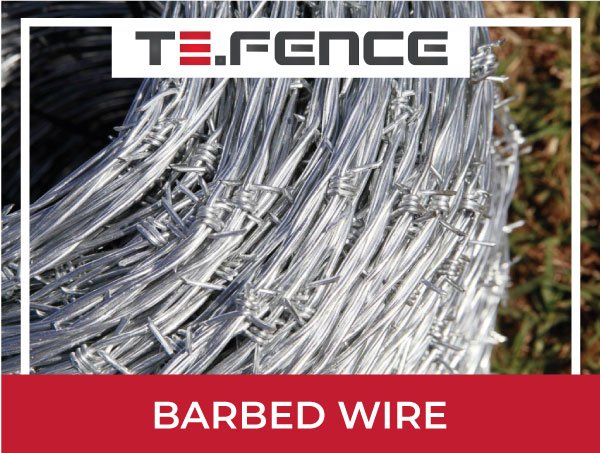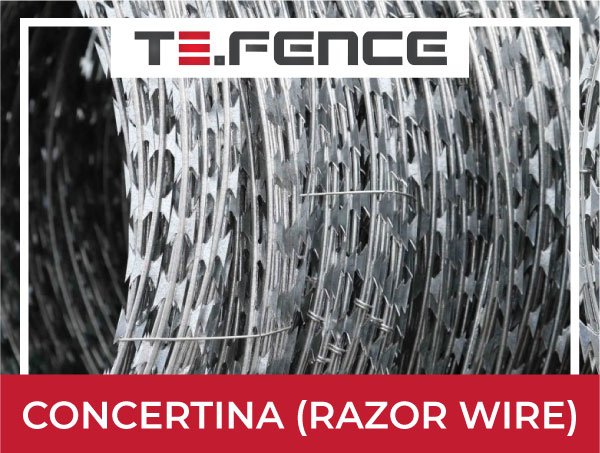Barbed wire is made of highly galvanised steel wire (stainless steel is available as an option). The barb diameter is 2.00 mm for a barbed wire thickness of 2.00 mm or 2.50 mm. The steel wire is hot-dipped, and this results in a highly galvanised material. Optionally, you can order stainless barbed wire, which has remarkably high corrosion resistance and durability. The barbs are spaced between 9 cm and 10 cm apart, a design that optimises their breaking strength. This offers a wide range of potential applications and meets the most stringent safety requirements. For example, you can use barbed wire on Y- arms or L-arms to increase the level of protection afforded by your high-security fence. Coiled barbed wire is unrolled mainly to reinforce agricultural and industrial fences, preventing both animals and humans from attempting to climb it. However, barbed wire is also used to secure residential fencing systems and prevent intruders from climbing over walls or fences, for example.
Concertina or razor wire is a roll of high strength steel wire used for defensive purposes. It is usually made of highly galvanised steel but can also be designed in stainless steel. Multiple steel strips in the shape of razor blades are distributed on the main wire to increase its efficiency. The main wire is 2.50 cm thick, while the blades are 0.50 mm thick, with a choice of sizes of 2.20 x 150 cm or 1.00 x 130 cm. We maintain a spacing of 2.50 cm between the razors in the concertina. Razor wire can be flat or spiral. Razor wire can be flat or spiral. In the latter case, you can choose between three gaps: 45 cm, 60 cm or 90 cm, depending on the level of security required and the constraints imposed by the existing or future fence. Concertina wire is frequently used to protect sensitive sites. Installed on fence panels, it is an effective way of securing prisons and detention centres, nuclear sites, military fences, administrative buildings, embassies, etc. Razor wire has optimum resistance to conventional cutting tools.


